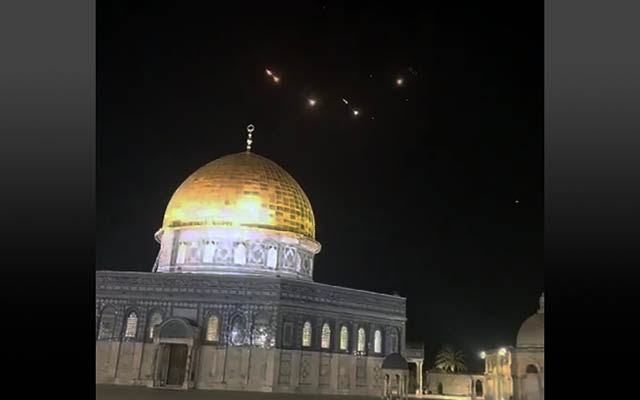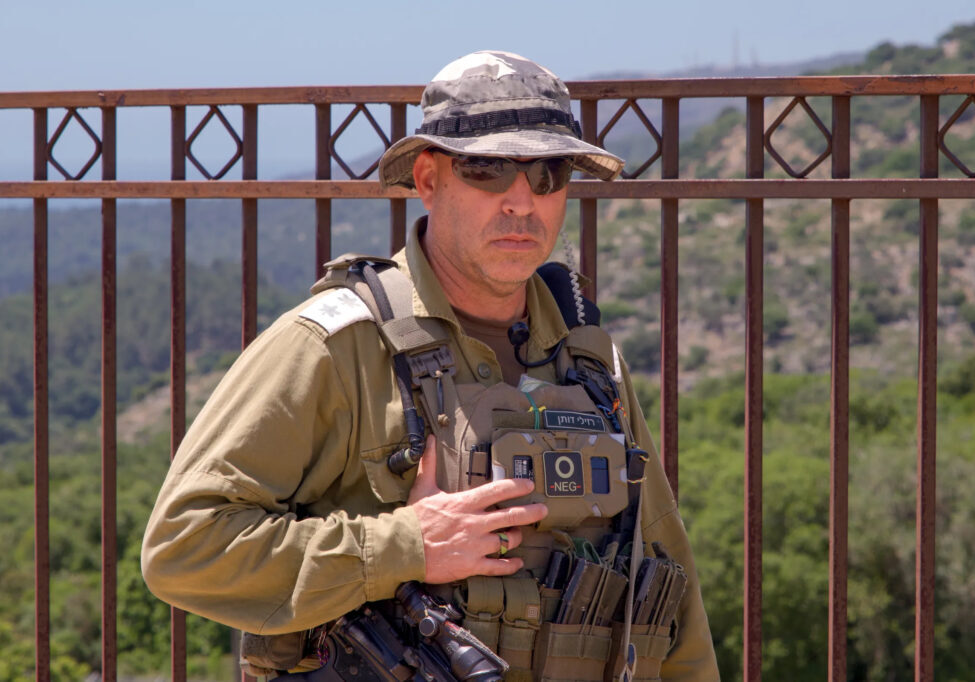Australia/Israel Review
Iran opens fire
Apr 19, 2024 | Ilan Evyatar

In March 2022, the United States convened top military officials from Israel, Saudi Arabia, Qatar, Egypt, Jordan, the United Arab Emirates, and Bahrain in the resort town of Sharm el-Sheikh in Egypt’s Sinai Peninsula to coordinate aerial defences. Among those present were the Israeli and Saudi chiefs of staff.
It was a move that followed Israel’s absorption into the area of responsibility of the US Army’s Central Command, CENTCOM, which has its forward headquarters in Qatar. The idea behind moving Israel from EUCOM (the US European Command) was to pool the resources of Israel and the Gulf states under an American umbrella to identify aerial and missile threats emanating from Iran and its proxies.
Several countries in the region operate US systems and some are even believed to employ Israeli systems.
At a Pentagon briefing later that month, General Kenneth McKenzie (read his article), the head of CENTCOM and the top American commander in the Middle East, said: “The task in the theatre is really how do you knit those together so you create more than the simple sum of the component parts… So everybody sees the same thing; everybody gets early warning; everybody can be prepared to react very quickly to a potential Iranian attack.”
Just over two years to the day later, those countries did exactly that when on the night between April 13 and 14 Iran launched perhaps the biggest combined drone and missile attack in the region’s history (more than 330 drones, cruise missiles and ballistic missiles) and the so-called Middle East Air Defense Alliance passed its first major test.
The main intended target was apparently the Nevatim Air Base in southern Israel, from where Israeli F-35 fighter jets are believed to have conducted the April 1 strike that killed Islamic Revolutionary Guard Corps (IRGC) commander in Syria General Mohammad Reza Zahedi and several other senior IRGC Quds Force officers. The strike hit a building in Damascus next to the Iranian Embassy that Teheran claims served as its consulate and therefore was sovereign Iranian territory. It was this claim that led Teheran to respond for the first time directly against Israel from its soil after a decades-long shadow war in which Israel, according to foreign sources, has repeatedly used cyberwarfare, sabotage and assassinations to target facilities and personnel involved in Iran’s nuclear program and has openly taken military action against Iranian forces entrenched in Syria.
Radars based across the region provided intelligence and early warning and the United States, the United Kingdom, France, Jordan, and Saudi Arabia employed fighter jets and missile defence systems to help Israel down all 170 drones fired at it before they even crossed into its territory. Most of the 30 cruise missiles fired at Israel were downed by Israeli fighter jets outside of Israel’s borders and 130 ballistic missiles fired by Iran were downed by Israel’s Arrow aerial defence systems. The latter’s use against the ballistic missiles was its first major operational test. The success rate of 99% in thwarting the attack is unprecedented in the history of aerial defence, as is perhaps the coalition that took part in the operation.
If Nevatim had been destroyed rather than sustaining minimal damage, and if the attack had caused numerous casualties beyond the serious injuries to one seven-year-old Bedouin girl, Israel would have been forced to launch a massive retaliation.
Instead, it and the coalition’s success leaves Israel with other options.
It has already become clear that, despite allies urging Israel to let the unsuccessful attack “go through to the keeper,” Israel will respond “clearly and decisively” as senior Israeli diplomatic sources told Israel’s Channel 12. Those sources added that the Israeli response would clarify that Israel would not “move on” from Iran’s attack and that Israel would not allow the Iranians to create a new equilibrium vis-a-vis Israel. At the time of writing however, the nature of Israel’s planned response remained unclear, and the region and the world remained on tenterhooks.
So what might that response look like? Will Israel respond to Iran’s intent, or to the damage caused? Will it coordinate its response with its partners in that defensive coalition, or will it opt, as some hawkish figures in Israel are urging, for a “devastating” military response to restore Israel’s deterrence and “put Iran in its place?”
From a military-operational standpoint, Israel has numerous options. These include strikes on Iranian military targets using fighter jets and armed drones capable of carrying missiles, surface-to-surface missiles, submarine-launched missiles, and special forces raids. It can also deploy cyber-attacks to disrupt Iranian infrastructure and covert operations against Iranian facilities and personnel, both options that it is said to have employed successfully in the past. It could also hit targets outside of Iran to show the Islamic Republic that it has failed in establishing the deterrence it was seeking to impose with its attack that was publicly presented as punishment for the Damascus assassination.
Those calling for a direct military response note the failure of Israel’s strategy of containment and active defence against Hamas, which relied on the success of the Iron Dome in limiting the damage of Gaza rockets, but came crashing down with the October 7 massacre.
Moreover, some Israeli leaders see this as an opportunity to initiate a long-discussed attack on Iran’s nuclear facilities. Large-scale direct military action however, especially a major operation against the nuclear program, will almost inevitably lead to all-out war with both Iran and Hezbollah. Israel has of course been engaged in an ongoing battle of attrition with Hezbollah, but below the threshold of full-scale war, since Hamas launched its invasion of the Gaza border area on October 7.
With Israel still involved in Gaza, an all-out war in the north would severely stretch the country’s resources. Defence spending has already soared as a result of six months of fighting with Hezbollah and Hamas, widening Israel’s budget deficit. The one night of aerial defence against Iran on April 14 is estimated to have cost in the region of 4 billion shekels (A$1.66 billion). To put this in perspective, Israel’s defence budget prior to October 7 was 60 billion shekels (A$24.84 billion). A protracted war with Iran and Hezbollah would be ruinous for Israel’s economy.
The United States, Britain, France and other Israeli allies have also made it clear that they are opposed to anything more than a very limited Israeli retaliation: “Take the win”, said President Joe Biden to Israel, adding that the US would not take part in any counteroffensive, while UK Prime Minister Rishi Sunak and French President Emmanuel Macron, although condemning Iran’s “reckless” actions, have called on Israel to avoid further escalation.
But if Israel’s allies are opposed to retaliation, this also provides a different sort of opportunity for Jerusalem.
The regional pendulum has swung again: if the Gaza war placed the primary focus back on a Palestinian state, the Iranian attack has shifted attention back to the Islamic Republic’s threat to Israel and the building of a regional coalition against Iran.
President Macron said that the focus should be on “isolating Iran, convincing countries in the region that Iran is a danger, increasing sanctions, reinforcing pressure over nuclear activities” in Iran.
Such a statement would once have been music to Israeli PM Netanyahu’s ears.
But now he has a difficult needle to thread. He needs to balance Israel’s need to maintain its deterrence, the restraint he is being called on to show by Israel’s allies, and the chance to increase the diplomatic and economic pressure on Iran to halt its racing nuclear program. He also needs to find a response that will make Iran feel real pain for its actions but will not provoke an all-out escalation – unless, that is, he opts to gamble that escalation will force the US’s hand and lead it to come to Israel’s defence again.
Inside Israel, most pundits expect a significant Israeli response, but there is no consensus at all with respect to what it is likely to look like or when will it occur.






